 1 / 28
1 / 28

 1 / 28
1 / 28

Can you tell us how you became interested in chess?
In present day, enthusiasm for chess begins at very young ages but it was different in my time. During my childhood, it was a game played in private spheres by senior elites including teachers, lawyers or doctors, i.e. members of the society with a well-defined profession. My father Mehmet Gökyay was both one of Turkey’s leading Algebra and Geometry teachers and a great chess player, who also taught me the game. In late1940s when I learnt and began to play chess I was around 8 or 10 years old, and in those days people became interested in chess only as early as their college years. As I had no opponent of my age, my only opponent was my father and he constantly defeated me. I was tired of these defeats and I came close to abandoning chess. You want to win every now and then but it was impossible, I had an outstanding player in front of me. One day, I guess I was 11 years old, I finally defeated my father. Of course this is a very interesting feeling, you beat the person who taught you the game. Winning once is a good feeling, beating the father is even better (laughing). Then I became distant from chess but my interest revived in my college years.
What does chess mean to you?
In fact, chess is not only a game, it is something well beyond it. It teaches you to think analytically. It allows you to design a strategy. It familiarizes you with other countries and cultures, and history. As acquaintances build up on these, our relationships become more distinguished and establish a basis of communication that allows many sorts of conflict resolution. So I have always said the following, all politicians and businessmen must learn chess. It changes your ways of thinking, in other words it has huge contributions both individually and institutionally. For example Atatürk is a great chess player, İsmet Pasha is even better, so is Süleyman Demirel. If these names succeeded in our political life, we may think that they owe part of this success to chess. I personally found it very useful in my business life and social relationships.
“My motivation has never been to become a collector. My main purpose was only to collect those designs I found valuable”.
Can you inform us about the content of your 41-year-old collection?
My motivation has never been to become a collector. My main purpose was only to collect those designs I found valuable and to exhibit them at one corner of my house. Since 1965 when I started working for Nurus, our company, it had a lot of contributions in terms of design, for instance it is the first company entering the German Design Council and received over fifty awards. Collecting chess sets is really a very difficult endeavor. It is very hard to spare some time to search for collection items when you are out on a business or meeting trip of 3-5 days in some town. I gradually acquired the shopping culture for it, for example I can find things in large stores with a wide product range, toy stores, touristic souvenir shops and antique shops. If you have the passion you are able to dedicate that time to search and find things. Of course, carrying them to the hotel afterwards, and to pack and bring some of them back to the country was difficult, especially as some were really big-sized. And as the number of sets reached twenty, my wife finally threw me out as it was our home at the end of the day and there was no space left. I’m grateful that I had my Office so that I could keep the sets there (laughing).
All the sets we have collected are thematic, and were selected by me as indicators of specific cultures, so there is no tournament set here. And they are very different from each other.
The size of this collection as globally the biggest of its kind, special design sets, important pieces and interesting stories… We would like to hear more about them.
All the sets here are special to me, they are like my children. For instance, a marble set I bought from New Zealand in 1993, it is very valuable for me but in fact it probably costs only 200 dollars. I don’t know if I ever go to that edge of the world again, or if I ever go, I can find the same set.
Then there is this piece that I received as a gift from a British architect friend of mine, dated 1860, the oldest piece in the collection. There are also other pieces that were produced with incredible craftsmanship, that leave you in amazement as you look closer.
These days there is this tendency to promote cities with chess sets, like in the case of Barcelona. London and Rotterdam have such sets too. We wanted to organize a nationwide design competition to promote Ankara. We wanted the project to involve historic buildings of the early Republican Era like the first Parliament, The customs Ministry, Ethnography Museum, Anıtkabir, Painting and Sculpture Museum. We intended to collaborate with the Ankara Development Agency to make it stronger. The process went on, the jury was summoned. I was surely looking for the participation of the students from universities’ design departments, while the agency wanted a more professional participant profile. It will take place in February 28 2017 and the prizes are quite encouraging. We expect the entire set as a prototype or rendering, i.e. with examples we can produce. As the first of its kind in Turkey, this competition’s scope might expand in the future.
I have two regrets. One is about not having written my memories about the collection, and it is very hard to do so as of now. The second one is about not having written my interesting memories about our people, as I toured the entire Anatolia due to my position in the Rotary.
And how about the Guinness prize and the process behind it?
Our collection is one of the largest of its kind in the entire world, it entered the Guinness Book of Records in 2012 with 412 sets. Now we have 590. As a rule they don’t accept the sets that are too similar to each other. As part of the process, a specialist we requested from Turkish Chess Federation counted them officially with a notary and we sent those records to Guinness.
Are there any other areas you are interested in as a collector?
I have a general urge to collect. For instance I collect “mugs”, which we also keep in the museum. Each mug has depictions and names of the cities they come from, their landscapes, flags and symbols. I have a collection of rosaries, walking sticks, mini figures in their folkloric costumes. If it counts, as a book enthusiast I own over 6000 books. 600 of them are about law, whereas the rest is more about the Ottoman and Republican histories. I also have around 350 paintings by artists including Mustafa Ayaz, İlksen Mavituna and Devrim Erbil and I haven’t been to galleries for five years because when I go, I can’t help but buy artworks. As the majority of them are kept at the factory storage and we can’t use them in another way, I question why I buy them.
“As part of my job I have been travelling a lot. In each country I saw chess sets reflecting their history, culture, geography and social structure. I became interested in them and began to slowly collect them.”
How did your long-term passion evolve into collectorship?
I used to travel a lot with my wife, both as part of my job and as a result of my position at the Rotary that lasted for 11 years. I suppose it evolved in time but me and my wife Birten Hanim with whom I have been together for 58 years, we have similar tastes. Although I was actually a law expert, I began to develop an amateur interest in design as a result of Nurus, the company awarded many times. During our trip to Milan in 1975 I saw a chess set. It was a great design example, it impressed me deeply and I wanted to buy it. I had seen it on a late Saturday when the shop was closed and I had to wait for three days to buy it.
As part of my job I have been travelling a lot. In each country I saw chess sets reflecting their history, culture, geography and social structure. I became interested in them and began to slowly collect them. I bought my second set from Bangkok and it reflected the Far East culture.
How do you proceed with the acquisitions?
The key is just to like it. Actually it is very unlikely for me to find something authentic. It had been made and I had bought it. Yet everything happens as you go and travel, you make the effort to see, to touch, and to try to choose. Of course I share my discovery with the team and we check if we already have it in our collection. As you know, there are two kinds of chess sets; the first is thematic and produced for design purposes, and then there are the tournament sets and people can’t understand why we collect them.
There are online auctions and such but I want to buy what I see. I want to feel this sophisticated thing that deserves to enter the collection, to see its condition. Sometimes it is also the case that people who have something special somehow contact me or the museum. People from all over the world email us to do something out of or to donate the sets they own. For example an air force sergeant who heard about my collection and who was interested in tiles, made a set and donated it as a gift as a beautiful gesture.
An anecdote from 3-4 months ago; a German friend of mine one day said to me “I found an address for you in Berlin. This couple used to sell chess sets at their shop but then they changed track and began to sell electronics. And they keep the sets they couldn’t sell at their home basement”. We took that address, gave them a call and grabbed a taxi and went there. They were waiting for us at the porch. We went in, in addition to chess sets they had many books about chess. The gentleman was of course astonished and asked us how we found him, for he had quitted the job. I guess I bought nine sets and the couple was joyous.
Again, I became friends with the president of the Munich Chess Club as he attended the event organized by our Munich store manager. He gave me a set, a 20-kg marble one. In aesthetic terms I would say that Italy is the answer but particularly around Florence, where special producers gather, you may find beautiful sets. Craftsmanship is the priority. Russia, Turkic republics, the Far East and South America similarly have good craftsmanship.
“It is very hard to spare some time to search for collection items when you are out on a business or meeting trip of 3-5 days in some town. If you have the passion you are able to dedicate that time to search and find things.”
Would you consider your collection as a type of investment?
For me it’s not a material investment. It is purely a spiritual fulfillment based on sharing and rendering accessible to the public. Of course I am very happy with it, I read with great pleasure many things from the visitor notebook at the entrance and the website comments. I surely have to be involved since all around the world museums can hardly stand on their feet with visitor and event income only, they definitely need sponsors. Up to now I have been financing everything on my own but lately I have been struggling. We are looking for sponsors, of course nothing goes on when you are alone.
What does this passion mean to you?
I acquired a collection outside of my professional life which I could share with the society. Now our efforts are directed towards making this beautiful museum survive. I plan to renew our Guinness record as the number of sets will hit 600. So the collection keeps growing and acquiring value.
How was the museum founded?
The collection was at the factory before the museum emerged, I used to wander in the collection when I was upset or bored, and I passed through them to go to my office. Each time I did so I forgot my anger or stress.
Especially my wife and then Altındağ Major Veysel Tiryaki insisted that I should not consider this collection as only mine, not keep them behind closed doors, and they encouraged me to share it with the wider public. That’s why we opened a museum. A location offered to us could be just short-lived. This was a sit area in total ruin. So we had to acquire two portions of land through bid and we built the exact replica of the buildings that were in ruins. They were built as traditional Ankara house plan, with the basement and the first floors in Ankara stone and the rest in wood and brick.
Then I created the Gökyay Foundation and donated the entire collection to it. I also funded the building construction project. We are monitored by the Ethnography Museum as all private museums must be related to a state museum.
Out of 590 sets, only 8-10 were gifts, and the rest were collected by me. It is one of the largest of the 14 chess museums in the world. It occupies an indoor area of 1008 meter-square. It is the only collection with a Guinness award.
What is the museum’s position regarding chess in Turkey, what is its mission?
We have the particular mission to render chess more popular and to promote its value as a mind game in the development of children.
Rendering this sport more popular particularly amongst young people as it allows a more analytical and multi-faceted way of thinking, and to contribute to the emergence of individuals with better thinking skills.
Contributing to world peace by presenting chess as an instrument reflecting countries’ cultures and histories.
To illustrate that every chess set is also a work of art reflecting the art of its country of origin.
To actively participate to or to organize sportive events to increase enthusiasm for chess.
“It is very important to share the collection with the society as it is only then that it can gain its real value.”
How about the museum’s projects and activities?
We do not embrace a classical museum philosophy solely based on exhibition. We have various activities, and we combine chess as a sport with art. On the last Saturday of each month we have classical music concerts by the chamber orchestra. On every third Friday of a month we show a film about chess. Ergin Çiftçi, a dedicated medical professor, makes an introduction before each film, and then answers the questions of the audience.
Occasionally we have seminars with participants that are experts in their fields. For instance we hosted Arslan Küçükyıldız, a producer from TRT who is interested in chess and mangala, a game considered the ancestor of chess.
We generally have chess courses for children. We also hold boutique chess tournaments.
And your experience regarding the collection of objects that are not classical artworks? Any recommendations for enthusiasts?
Collecting something actually means passion for art and culture. You absolutely have to classify the things you have collected within a certain system and somehow share it with the public. This is a great satisfaction. If we consider we waited for 41 years to open the museum, it means you need years of accumulation in many aspects to become a collector.
It is also a difficult endeavor that requires patience. It is very important to share the collection with the society as it is only then that it can gain its real value.
I think the state should give support to the collections the society chooses with care and that completed their museum status requirements.
This interview is conducted by Ali Gazi on behalf of Art50.net for TEB Private.



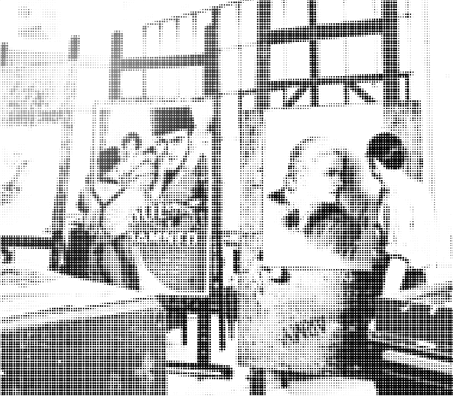



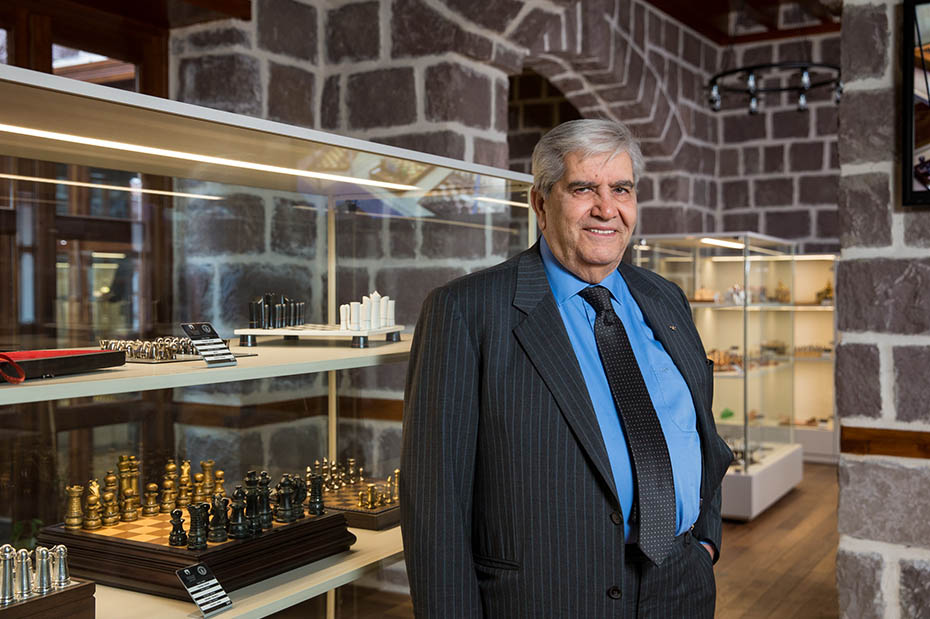
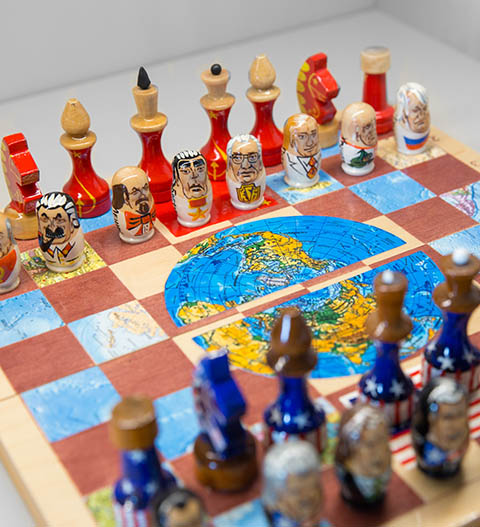
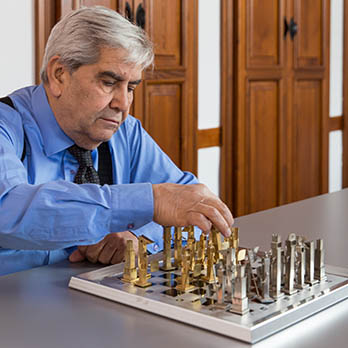

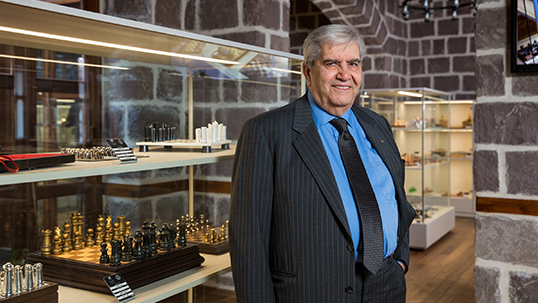
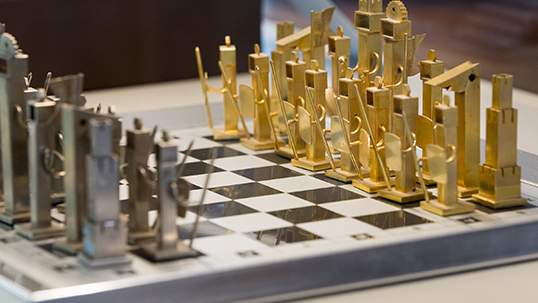
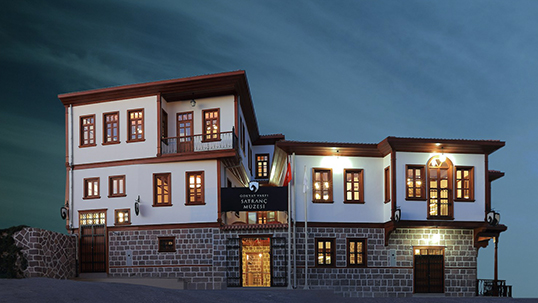
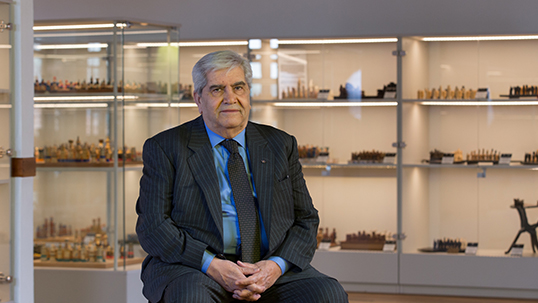
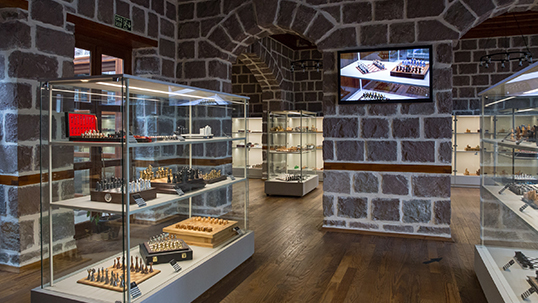
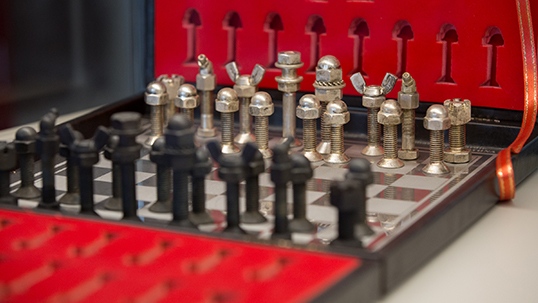
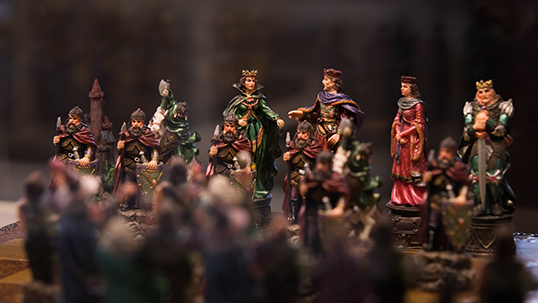
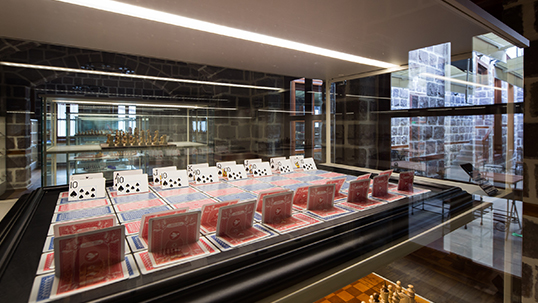
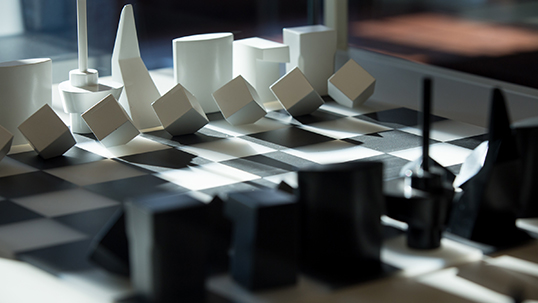
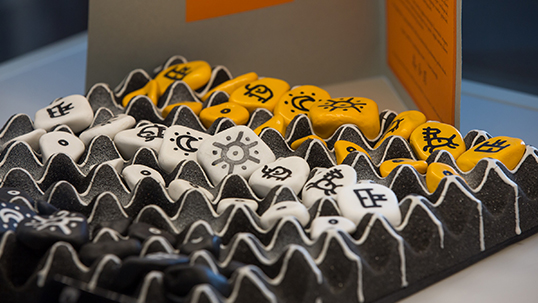
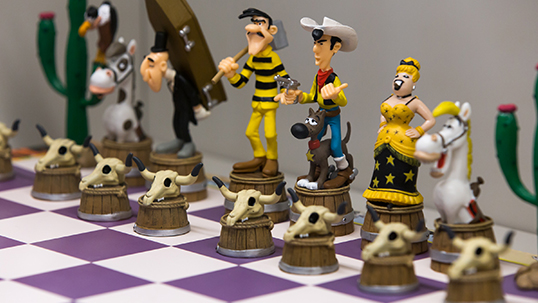
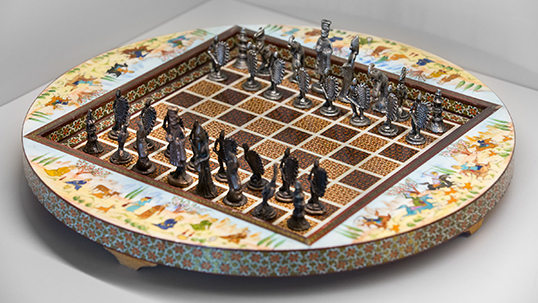
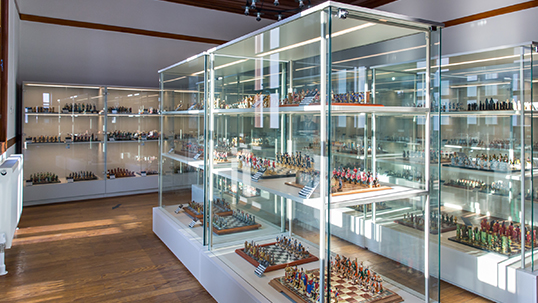
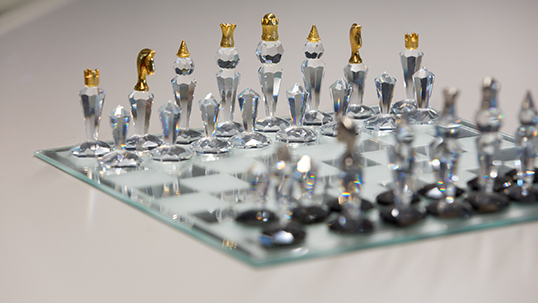
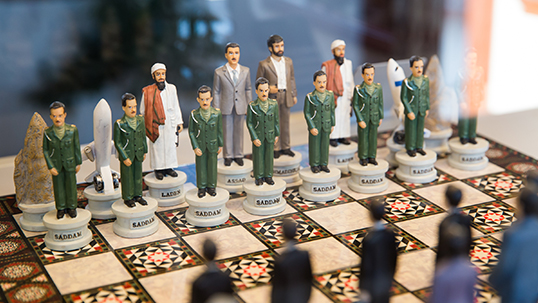
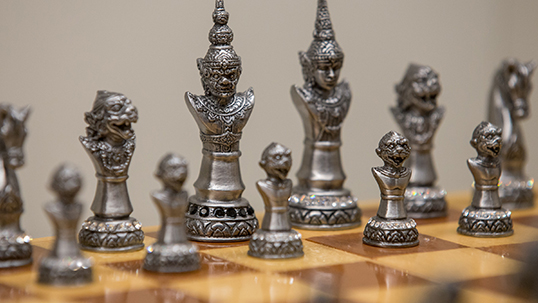
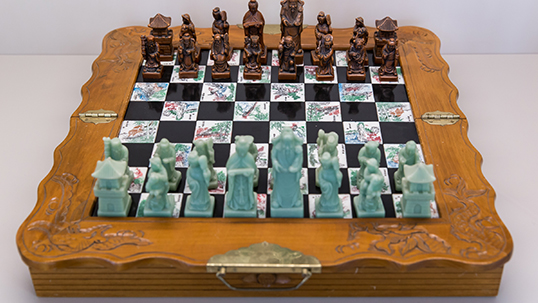
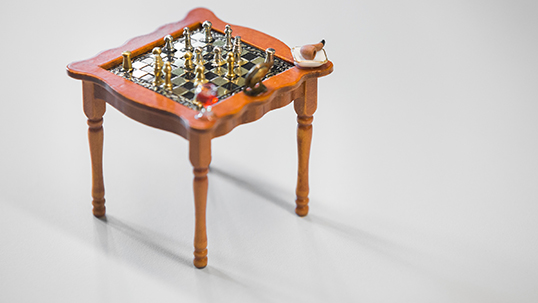
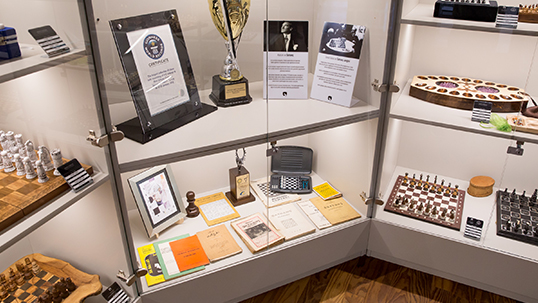
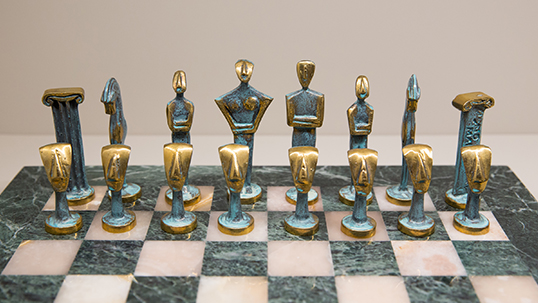
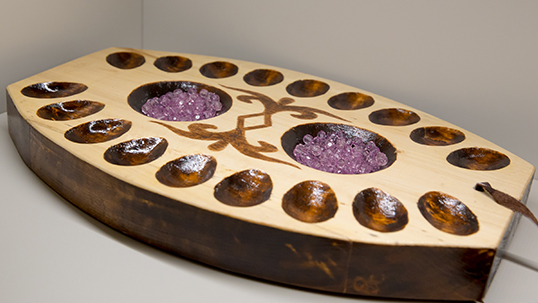
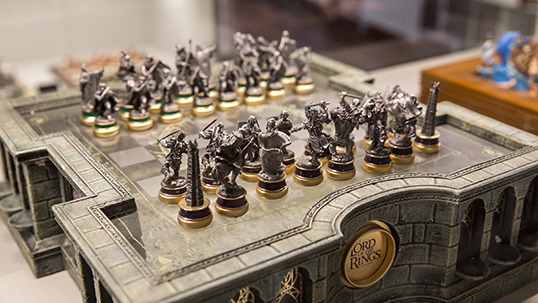
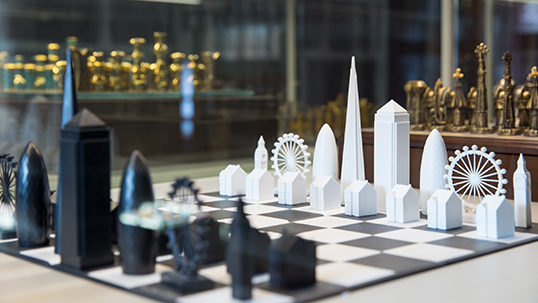
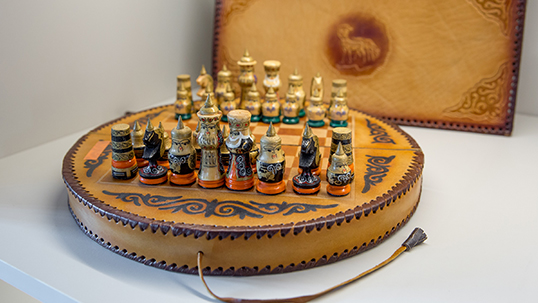
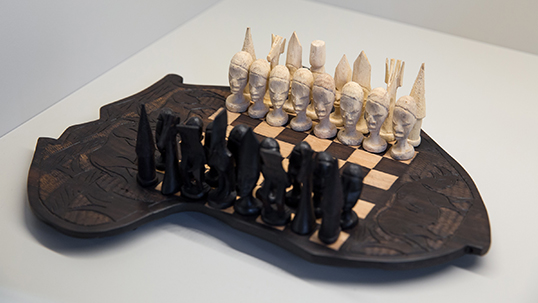
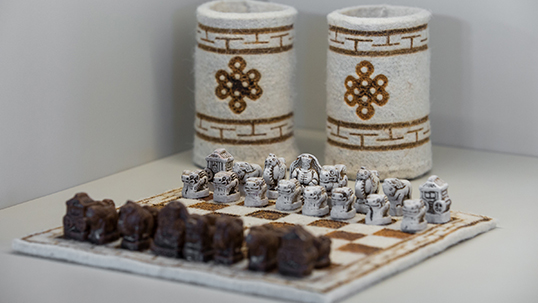
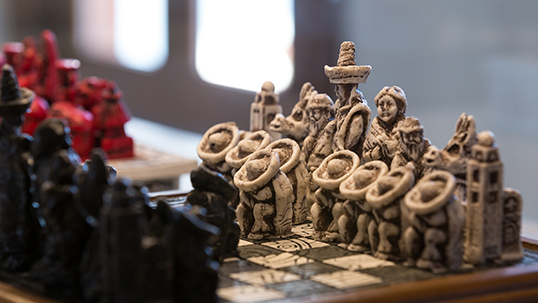
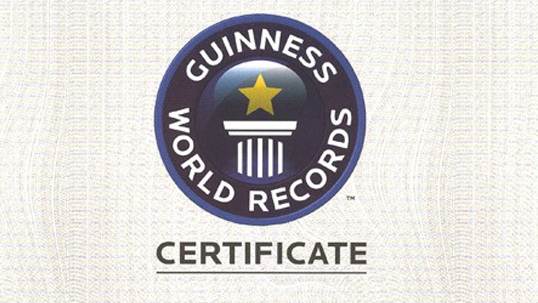





 UP
UP


